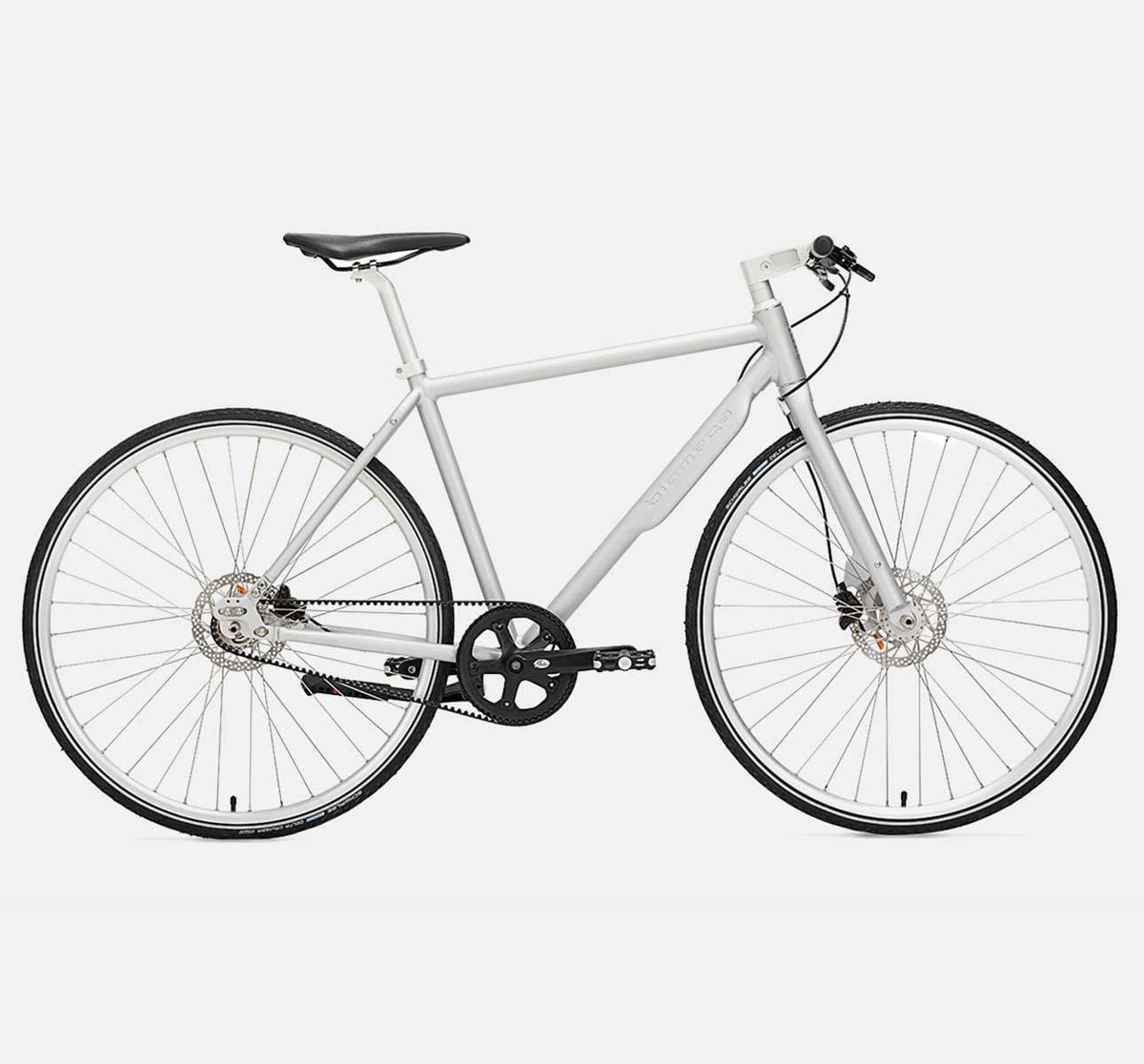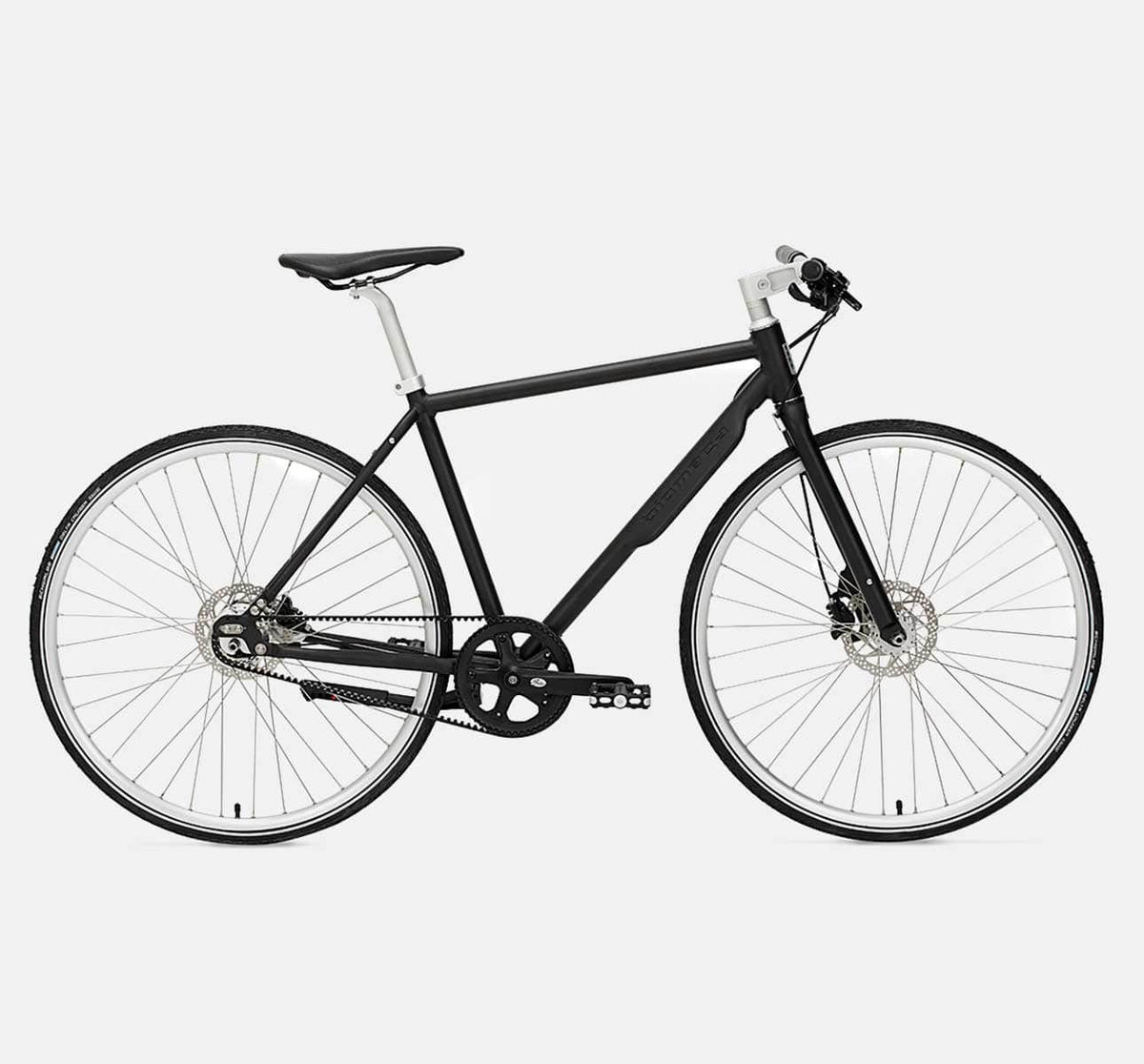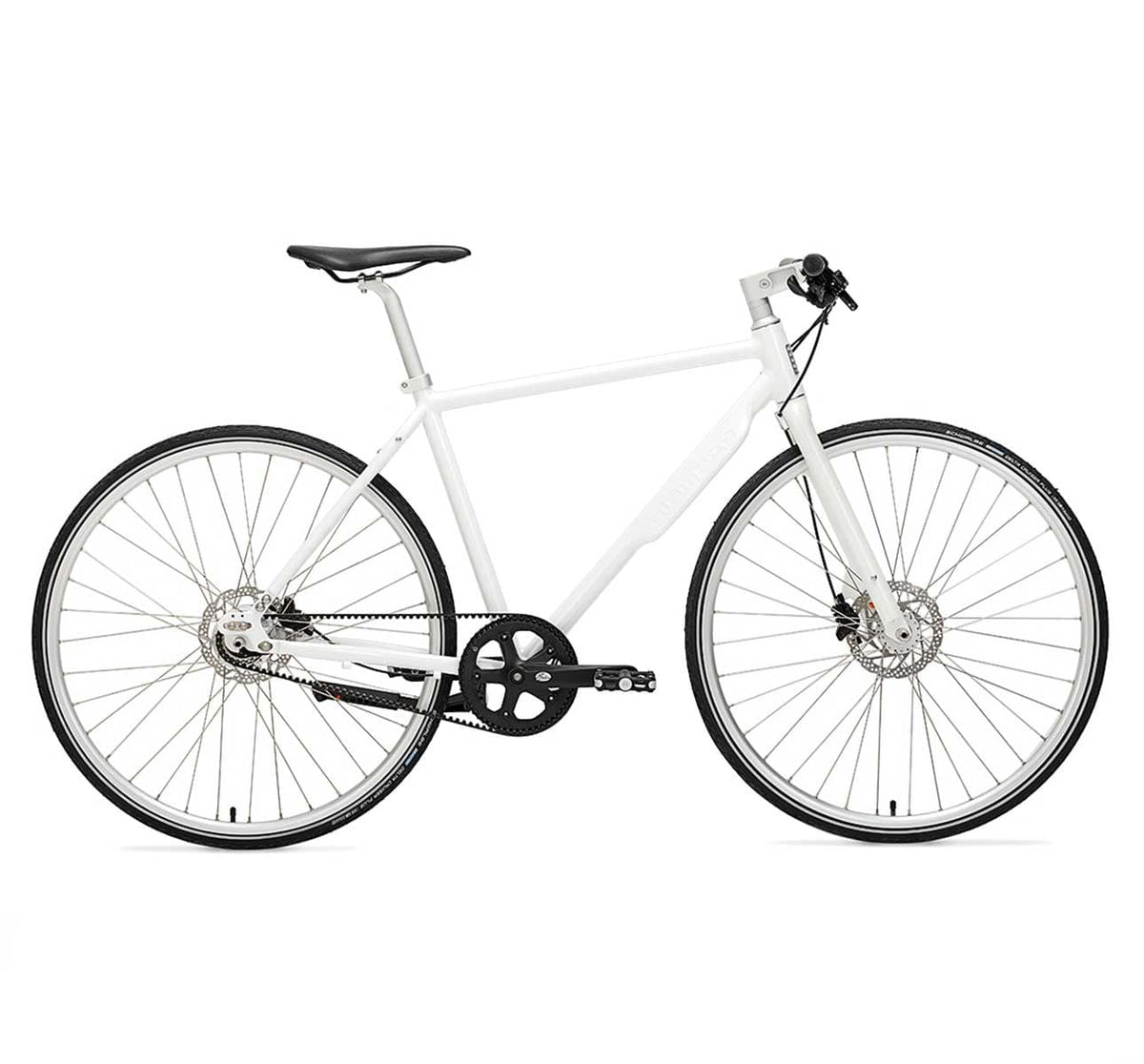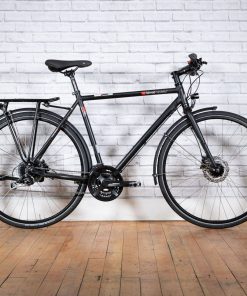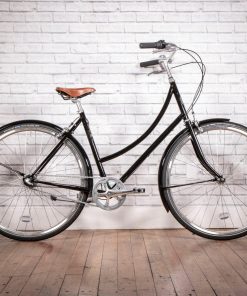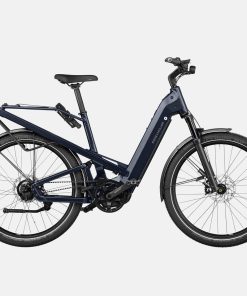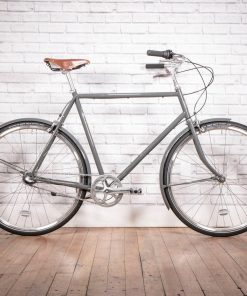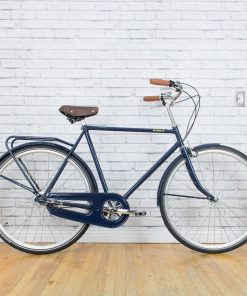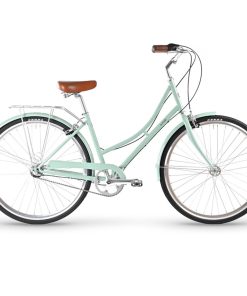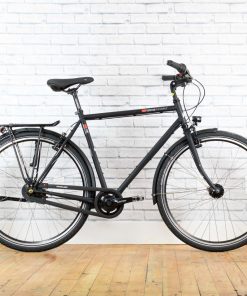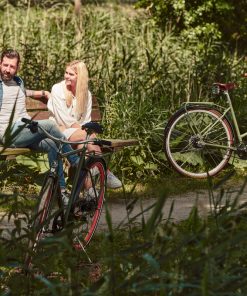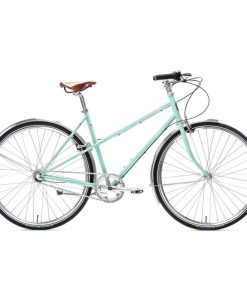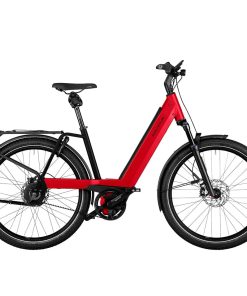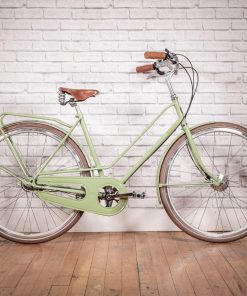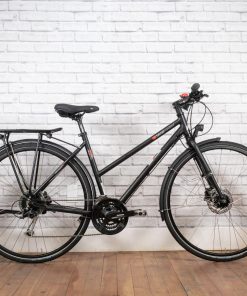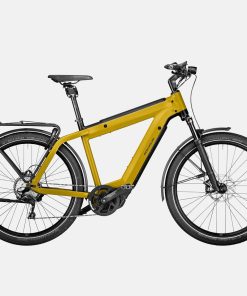BIOMEGA – Nyc 7-Speed – Gates – Roadster Biomega
$ 2.549,99 $ 637,50
It takes a team of Danish designers to understand that the bicycle is as equally functional as it is beautiful. Since 1998, Biomega has been producing bicycles that distill the bicycle as design object while pushing function towards new boundary-pushing heights.
Take the NYC. It’s recognizably Danish with its streamlined, naked formalism, yet a careful look reveals quiet and non-ornamental embellishments. The down-tube – with its stylish etched logo – flares out as a built-in front fender. The stem, designed by Apple’s Marc Newson, employs an i-beam structure that is at once beautiful yet super-stiff for better front-end handling. Finally, there is the Gates Belt drive – connected to the wide-range 7-speed gear hub. The Gates Belt drive replaces the standard bicycle chain and is capable of 60,000km without replacement – never once requiring a drop of oil. This is Danish design for Danish weather, a city bike designed for Copenhagen’s sprawl; offering a comfortable yet responsive bike that rapidly connects all the dots in your life.
Biomega is committed to creating a paradigm shift in the way society imagines transportation by making urban ‘‘furniture for locomotion’’, developing bikes so beautiful that they compete directly with cars. A project of Denmark’s KiBiSi – whose members include Danish designer Jens-Martin Skibsted – Biomega is noteworthy for their collaborations; including bikes designed by Marc Newson, Karim Rashid, Ross Lovegrove and more.
- Questions? Book a consultation with one of our Recreational Bike experts
- Lightweight, stiff and corrosion-proof aluminium frame
- Frame includes built-in splash guard with engraved logo
- Low-maintenance Nexus 7-speed internal gears
- Powerful hydraulic disc brakes
- Marc Newson designed stem
- Puncture resistant tires for care free rides
- Strong rear mount kick stand – made in Switzerland
- Perfect for any season and a variety of terrains
| BIOMEGA NYC 7-SPEED – GATES – ROADSTER | |
|---|---|
| FRAME | Aluminum 6061 – Powdercoated |
| FORK | Lightweight Aluminum – Powdercoated |
| HEADSET | Integrated press-fit |
| STEM | Marc Newson alloy – 1-1/8 threadless |
| HANDLEBAR | Biomega aluminum |
| GRIPS | Lightweight and grippy silicone |
| SEATPOST | Biomega alloy 27.2 |
| SEAT | Biomega Anatomic |
| BRAKES | Shimano Deore Hydraulic Disc |
| BRAKE LEVERS | Shimano Deore Hydraulic |
| SHIFTER | Shimano Nexus 7 trigger shifter |
| FRONT HUB | Sealed alloy with 8mm antitheft key |
| REAR HUB | Shimano Nexus 7-Speed Freewheel |
| SPOKES | 13G Stainless Steel, 36 Spokes** |
| RIMS | Double-walled, eye-letted aluminum |
| TIRES | Schwalbe Marathon 700x32c |
| BOTTOM BRACKET | Cartridge sealed |
| CRANKS | Gates CDN Belt 46T |
| CHAIN | Gates CDN Belt drive |
| COGSET | Gates CDN Belt, 24T |
| PEDALS | Biomega – Designed by Jens Martin Skibsted |
| KICKSTAND | Ursus Alloy – made in Italy |
| FRONT LIGHT | N/A |
| REAR LIGHT | N/A |
| FENDERS |
N/A |
| CHAIN GUARD | N/A |
|
BIOMEGA NYC 7-SPEED – GATES – ROADSTER |
FROM | TO |
|---|---|---|
| MEDIUM | 5′ 4″ | 5′ 9″ |
| LARGE | 5′ 10″ | 6′ 5″ |
How is a city bike different from other types of bikes?
Behind each bike lies a designer, and within each designer lies assumptions. The assumption of most North American bike designers is that people ride bikes for recreation, which usually involves a bike path, a country road, and several hours of spare time. The bikes that result from this assumption are usually hunched-over, have exposed oily drivetrains that require tighter athletic clothes, feature anywhere from 21 to 33 speeds, and aren’t often made to be locked up to metal poles all day, especially in foul weather. A city bike is quite the opposite. Its position is gloriously upright (or aggressive, in the case of Biomega), the chain is totally covered (or there is a belt drive – even better!), you can wear whatever you want, you have all the gears you’d ever need (3-speeds for flatter terrain, 7 or 8-speeds for hills), and tough frames and sealed mechanisms to battle all kinds of weather.
What’s the difference between a brand like Biomega, Rabeneick, and others you carry?
We believe bikes are beautiful objects, but that few bicycle designers tap into this beauty. At the same time, we don’t believe function should follow form, otherwise function is sacrificed to schmaltz. That’s why we like Biomega. They’re Danish, so they were borne on bikes, and they add function where we haven’t seen function before – take for instance the clever and beautiful built-in splash guard, part of the frame! At the same time, they take the best existing technology and use it on their bikes. The Gates belt drive, the brand-name Shimano Deore hydraulic brakes- these are all faultless parts. And then there is beauty for the sake of beauty, because why not? The Marc Newson designed stem, the Jens Martin-Skibsted designed pedals, the etched logo, the gorgeous yet muted Pantones. This is a bike that honours the bicycle as design object while pushing function and form further. And, like all good democratic design, it’s still totally affordable; especially if this is your main mode of urban transportation.
How strong are the wheels and will I get a lot of punctures?
Wheels are always the first part to break on most bikes and these wheels are strong! All the city bikes we sell feature strong double-walled rims that are internally box-sectioned to handle streetcar tracks and potholes. They all feature strong stainless-steel spokes that can never rust. Bikes like the Bioemea also feature Schwalbe Marathon tires that are Kevlar-belted tires to drastically reduce punctures in the city.
What is an internal gear hub?
In Europe a bike with an internal gear hub is what makes it a definitive city bike. Internal gear hubs are awesome. Because the chain isn’t derailed up and down a set of external cogs (using a derailleur), the chain will never fall off again, and best of all, the chain can be covered so you can wear whatever you want. The gears are sealed inside the rear hub and they hold a tune two times longer than a derailleur, minimizing tune-ups and allowing you to store the bike outside throughout the winter problem-free.
What is a belt drive?
Belt drives have been developed over the last 30 years for use in racing engines and motorcycles. They are a band of nylon teeth held together with a series of carbon fibre cords, paired with alloy alloy chainrings and stainless-steel cogs. They’ve recently made the jump to bikes because they’re nearly silent, don’t require lube (and are much more winter-proof as a result), don’t rust or get jammed with debris, and last for up to 30,000km of riding before needing replacement. We don’t see them often on North American bikes because they can’t be used with external derailleurs, only internal hubs or crank-based gearboxes.
How do I ensure my new bike won’t get stolen?
Research shows that very few bicycle thefts are related to a bicycles value and are best defined as low-risk/low-return. A good bicycle lock is expensive to break through and takes time, thus increasing the risk and lowering the return. Estimates are that over 90% of bicycle theft is tied to cash-for-drugs and that makes every bike a target. Make sure you buy a good Abus U-lock or a chain and you’ll be fine.
What’s the warranty?
Ten year warranty for manufactures defects on frame and fork, one year on parts. Does not include wear and tear.
| Size | Medium, Large |
|---|---|
| Colour | Black, White, Silver |
Fast Shipping with Professional Packaging
We offer a broad range of shipping options due to our long-running partnerships with UPS, FedEx and DHL. Our warehouse staff are highly trained and will be able to pack your goods in accordance with our exact and precise specifications. Your goods will go through an extensive inspection and will be properly secured before they are shipped. Every day we ship thousands of packages to clients from all over the world. This shows that we're committed to becoming the biggest retailer on the internet. These warehouses are located in Europe in the same way as they are in USA.
It is important to note that orders with more than one item will be processed according to the item.
Prior to shipment before shipping, we'll examine thoroughly the items you've purchased. Today, the majority of orders will be delivered within 48 hours. It is expected that delivery will take between three and seven days.
Returns
Due to the multiple parties involved such as the factory and the warehouse, we cannot completely manage our stock. The actual inventory can change at any moment. It's possible that the stock may run out after your order has been placed.
The period of time is 30 days. If you haven't received your item within 30 days, we are not able to issue a refund or an exchange.
To be considered eligible for return it must be in its original packaging, unopened and in the same state as you received it in. The item must be returned in the original packaging.
Related products
City Bikes
City Bikes
City Bikes
Homage GT Rohloff – Gates – 49CM – COMFORT KIT – FRONT CARRIER – LOWERABLE SADDLE Riese & Müller
City Bikes
City Bikes
City Bikes
City Bikes
City Bikes
City Bikes
City Bikes
City Bikes
City Bikes
City Bikes
City Bikes
City Bikes
